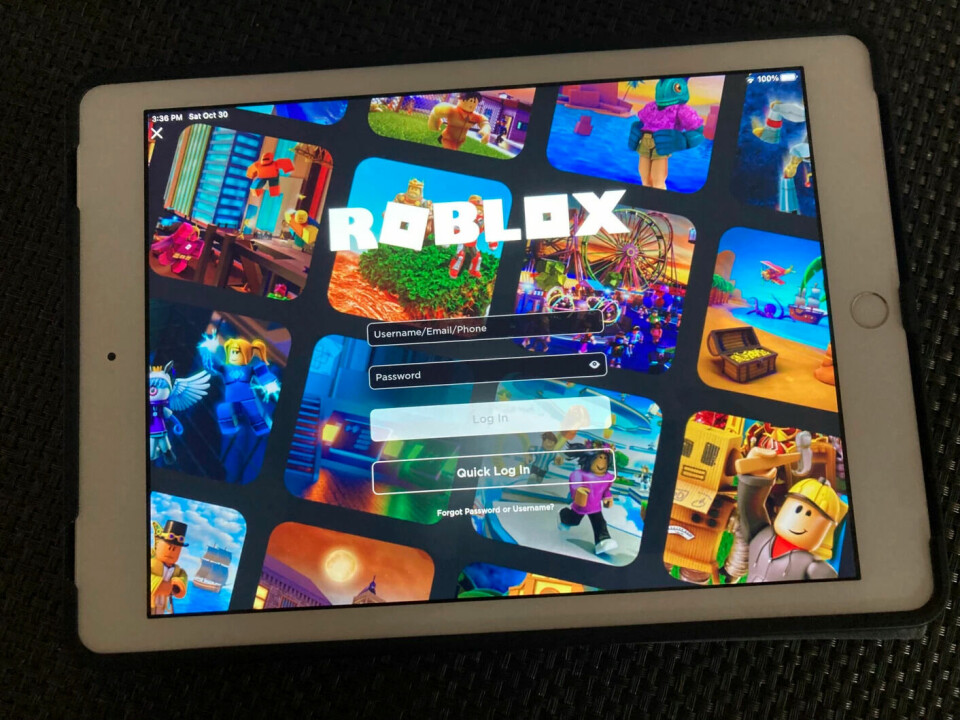
Can the metaverse become a reality?
“The metaverse really peaked in 2021. It was at the same time as the crypto bubble,” Hanne Sofie Lindahl says. Will there ever be an internet you can experience being inside of?
The term metaverse was first used by Neal Stephenson in the novel Snow Crash in 1992.
The author wrote about a digital world you could step into by putting on a pair of glasses.
In the form of an avatar, you could move around a city designed along a 100-metre-wide road around an otherwise pitch-black planet.
In another book, Ready Player One, published in 2011, Ernest Cline wrote about a crisis-ridden world where many people spent their time in the virtual game Oasis using VR equipment.
Will reality in the future approach these science fiction stories? Will people meet, play, and shop in a 'metaverse' consisting of interconnected virtual 3D worlds?
An internet to be in
Some companies have already attempted to make the idea a reality.
What the metaverse is or will become depends on who you ask. Technology companies have described it somewhat differently depending on what they are focusing on, but they have some commonalities.
This is what the Norwegian Board of Technology (NBT) wrote in a report released at the end of last year. The report was produced in collaboration with the Norwegian National Human Rights Institution.
“We are talking about an internet in development, an internet that goes from being something you scroll through and look at, to being an internet you experience being in,” Hanne Sofie Lindahl says. She is the project manager at NBT.
You can think of it as an internet in 3D. With VR and AR technology, you can get the feeling of being in services or game worlds.
Interconnected
Furthermore, the idea is that the metaverse should be interconnected. Like jumping from one website to another, you should be able to travel from place to place with your avatar in the metaverse.
“You should be able to be at work in one universe, go to the cinema in another, and shop in the third,” Lindahl says. “You should be able to do this at the same time as everyone else, which entails an absolutely insane amount of computing power that we are nowhere near having today.”
Does not arouse excitement
The idea became known when Facebook changed its name to Meta in 2021.
The name change was meant to reflect that the parent company was going to focus on developing the metaverse.
CEO Mark Zuckerberg referred to the vision as a successor to mobile internet.
Meta has launched Horizon Worlds, a VR gaming platform that is intended as a prototype of the metaverse. Enormous sums have been spent on the project, but the reception has not been particularly good.
The graphics in the game have been criticised for being simple, the avatars are legless, and the game has been plagued by bugs. The number of people using the app has been lower than Meta hoped for in 2022, according to Business Insider.
“When you look at the user figures, you can see that Horizon Worlds has not done very well. Not even Meta emloyees want to use it, which became a popular conversation topic last year,” Lindahl says.
Footage from inside Horizon Worlds a year ago, made by Meta. (Video: Meta Quest / YouTube)
The cryptoverse?
Others have also tried.
There are two rough divisions among those who have connected to the idea of the metaverse, according to Joakim Vindenes.
He has recently completed a doctorate in VR at the University of Bergen. He also runs a blog and YouTube channel about VR.
“The first has to do with cryptocurrency and blockchain technology,” Vindenes says.
Here, there is a thought that the metaverse should be decentralised.
“Blockchain technology is used to create something where there is no central actor who decides what should be there. It is user-generated,” he says.
Examples of such virtual worlds are The Sandbox and Decentraland.
“Here, the metaverse hype is combined with the crypto hype, which was stronger a while ago than it is now,” he says.
In Decentraland, you can build, rent out, and sell properties and other items with cryptocurrency, according to NBT’s report.
The Sandbox is more game-based, but here too, you can buy and sell. The Sandbox became famous when Snoop Dogg’s neighbouring property on the platform was sold for 450,000 USD.
Today, there are very few users on both platforms, according to the report.
Attempted coup
“On the other hand, we have Meta's attempt to hijack the concept,” Vindenes says. “They focus on VR as the entrance and have their understanding of what a metaverse will be, which is, of course, very centralised. A bit like your Facebook account becoming an all-encompassing reality.”
He also points out that what Meta really launched when they changed their name was a vision of the future.
“There was no talk of this being available now. It is something they want to work towards. That people should start working in VR and do everything possible in VR. It was more of a vision for the company they presented than this being Horizon Worlds, which is basically a simple social VR app,” Vindenes says.
He does not rule out that there may be good prospects for Meta in this field in the future.
VR chat
There are also others who have tried to create a social VR world.
“You have living, dynamic, social VR worlds, but they are not Horizon Worlds,” Vindenes says.
He cites VRChat as an example of a social VR platform that works well.
“People can create their own virtual worlds and avatars, and it's simply quite nice to use. They actually have a pretty large community of users. It's a very small company and a small team behind it,” he says.
Trailer for a documentary from HBO Max filmed in VR chat. (Video: HBO / YouTube)
Huge popularity
There are also game worlds that have features of what we call a metaverse. They are mostly played without VR glasses.
Games like Minecraft, Fortnite, and Roblox all have many millions of monthly users and are social. In Fortnite, for example, concerts with well-known artists have been held where you could participate with your avatar.
Roblox is a gaming platform that is popular among children. Players can develop games on the platform themselves. A separate currency called Robux can be bought with real money and used to buy virtual items or games.

Crypto crash and ChatGPT
But will the metaverse become a reality, or was it just a flop?
“The metaverse really peaked in 2021. It was at the same time as the crypto bubble,” Hanne Sofie Lindahl says.
In 2021 and 2022, a lot of money was invested into developing the metaverse. Now, engagement has declined.
“It almost feels like the metaverse is over already,” Lindahl says. “It's partly because crypto has crashed, and the tech industry has had to deal with tough economic times and mass layoffs. It is also because artificial intelligence in the form of large language models, like ChatGPT is built on, has taken over the scene and is the new big thing.”
Vindenes agrees that the hype has clearly declined. Personally, he doesn't think it matters much. Nevertheless, he thinks exciting things are happening in the VR field.
Something people want?
Manufacturers are still struggling with the fact that relatively few acquire VR headsets, and people may quickly lose interest.
“It’s hard to crack the code and make VR something for everyone,” Hanne Sofie Lindahl says. “Maybe Meta never really considered whether the metaverse is something people actually want.”
There are rumors that Apple is working on a mixed reality headset that will feature both VR and AR. But it is not known when it will be released.
Joakim Vindenes believes that the use of VR glasses could increase in the future.
“The most important factor, as I see it, is comfort. It should be comfortable to wear and use over time,” he says.
He believes that VR has the potential to be a useful tool, especially socially.
“The feeling of social presence is very good and effective. You can do things together. There is still a long way to go before we can work in VR,” he says.
An advantage of VR is that it is easier and cheaper to create virtual objects than physical ones, he continues. For example, you could sit in a VR office with several large screens to work on, which do not exist in reality.

Probably makes the most sense in games
Lindahl says that when it comes to virtual platforms, games are the biggest and growing.
“For example, Roblox has over 200 million monthly users, with as many as seven out of ten under the age of 16. So all the kids are on Roblox,” she says.
In Norway, more than half of nine- and ten-year-olds are on Roblox, according to an article from Barnevakten (link in Norwegian).
“It is in online games that virtual worlds may make more sense. And there is a lot of money to be made from it,” says Lindahl.
For example, Epic Games, which is behind Fortnite, has teamed up with Lego to create a sort of metaverse for children. Epic Games announced this last year.
Large technology companies are also focusing on games, she continues.
New privacy challenges
As it stands, it does not appear that the big metaverse where everyone wants to be will materialise, according to Lindahl.
“But I think we will see enormous development within online games and the blurring of lines between games, movies, and social media,” she says.
If immersive VR worlds become more popular, there may be problematic aspects that need to be monitored, Lindahl believes.
“Especially related to privacy. The equipment you use can lead to much more data collection. The equipment can measure your movements, body temperature, eye movements, and can be used to measure emotional responses. Perhaps it can be misused if the data falls into the wrong hands or is used to push people towards buying a product,” she says.
Other aspects she highlights include opaque algorithms, manipulation, and misinformation.
“There are many things to address. Especially when you also know that it is children and young people who get to test the technology first. That they are guinea pigs for the next generation of the internet is a huge problem,” Lindahl says.
———
Translated by Alette Bjordal Gjellesvik.
Read the Norwegian version of this article on forskning.no




































